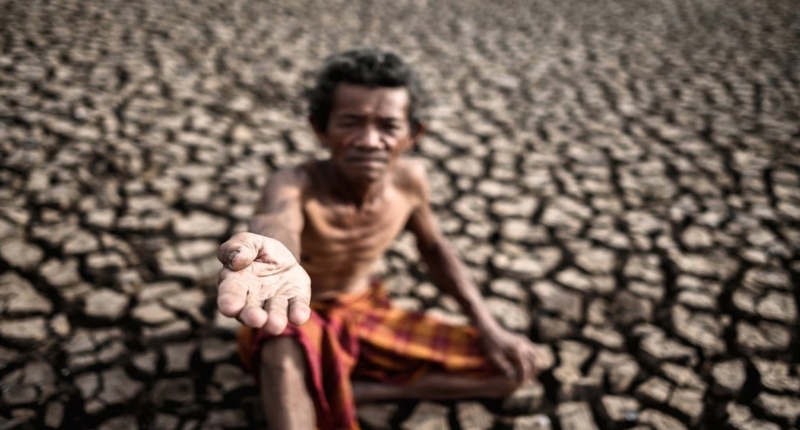The deadly trio of drought, hunger, and poverty has a devastating impact on communities globally. Climate change causes more frequent droughts worldwide that impact agriculture, the primary source of livelihood for many people in developing countries. This leads to food insecurity, poverty, malnutrition, and water scarcity. Sustainable agriculture practices, such as using drought-resistant crop varieties, rainwater harvesting techniques, and efficient irrigation systems, can mitigate the effects of droughts. Furthermore, investing in education, healthcare, clean water, and sanitation can break the vicious cycle of poverty and hunger. It is time to take action to address these issues and ensure communities’ resilience to droughts through sustainable development initiatives.
The Devastating Trio: Drought, Hunger, and Poverty
Communities worldwide are facing a dire threat in the form of the deadly trio of drought, hunger, and poverty. While droughts are a natural occurrence, their combination with hunger and poverty can lead to severe and lasting social and economic consequences. This blog delves deeper into how these issues impact communities and what can be done to tackle them.
The Impact of Drought
Climate change is causing an increase in the frequency of droughts worldwide. These prolonged periods of little to no rainfall can have a devastating effect on agriculture, which is the primary source of livelihood for many in developing nations. Crop failure leads to food insecurity and poverty, leaving farmers with little to no income. Moreover, droughts result in water scarcity, which can impact sanitation and hygiene, leading to a rise in waterborne diseases.
The Impact of Hunger
Hunger is a significant outcome of droughts and is closely associated with poverty. When crops fail, people do not have enough food to eat, leading to malnutrition and starvation. Hunger can have severe effects on children, leading to stunted growth, weakened immune systems, and cognitive impairments. The susceptibility to disease also increases, which can exacerbate the consequences of droughts.
The Impact of Poverty
Poverty is both a cause and consequence of drought and hunger. When people lack sufficient income, they cannot invest in water harvesting and irrigation systems, leaving them vulnerable to droughts. Poverty also limits access to education, healthcare, and basic amenities such as clean water and sanitation. This leads to a vicious cycle where poverty results in hunger, leading to further poverty.
What Can be Done?
The deadly trio of drought, hunger, and poverty might seem overwhelming, but steps can be taken to tackle these issues. Investing in sustainable agriculture practices is a crucial solution that is resilient to droughts. Using drought-resistant crop varieties, rainwater harvesting techniques, and efficient irrigation systems can mitigate the effects of droughts. Improved access to education, healthcare, clean water, and sanitation can also break the cycle of poverty and hunger.
Addressing the Impact of Drought, Hunger, and Poverty
The deadly trio of drought, hunger, and poverty is wreaking havoc on communities worldwide. Addressing these issues requires sustainable development initiatives that tackle the root causes of poverty and hunger. Investing in sustainable agriculture practices, education, and healthcare can help communities break the vicious cycle of poverty and ensure resilience to droughts. It is imperative to take action now before it is too late.
Don’t miss interesting posts on Famousbio










